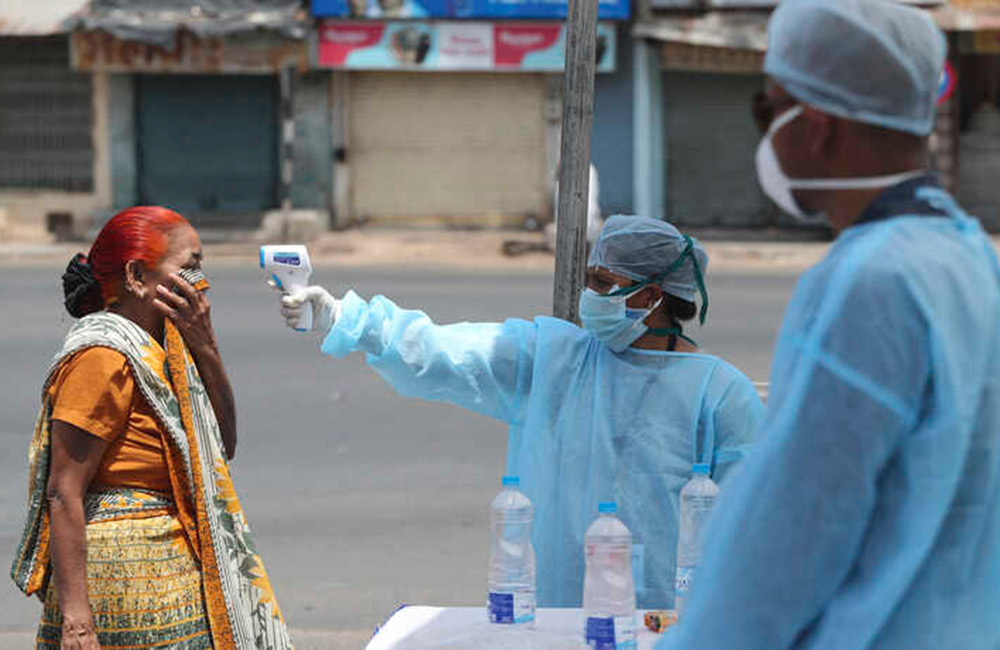For a country of 1.3 billion people, dealing with the COVID pandemic takes immense effort. As of 16 April, there are 12380 confirmed cases; and 414 deaths reported in India. India recently announced the extension of its lockdown to 3rd May but will partially open up industrial, agricultural and allied activities after April 20.
The lockdown that India enforced from 25th March was truly unprecedented. It included, for instance stoppage of the railway passenger services, a first in India’s history as a Republic. But the pre-emptive measure allowed India to ready its infrastructure. Over 500 dedicated COVID hospitals and over 5000 additional health facilities have been readied to deal with infected cases. Indian Railways also come up with an innovative strategy to provide 40,000 isolation beds by converting railway carriages into isolation units.
Evidently, the lockdown has led to positive results. Estimates suggest that without the lockdown and social distancing, India could have had upto 820,000 cases by 15 April. With the lockdown, the count is around 12,000 cases currently. More importantly, the cases are largely localized.
But lockdown is only one of the few measures that India has under taken to mitigate the effect of the COVID pandemic.
In a proactive manner, India started its flight-screening systems from 17 January, a full 13 days before the first case was detected in the country. This was followed by increased screening of passengers, graded travel restrictions and finally full stoppage of international flights. This early screening, before even phase-1 of the infection began in India, gave India a jump start in preparing its system for the pandemic. International organisations like WHO and IMF have acknowledged India’s early responses as proactive, pre-emptive and graded. Sri Lanka, on the other hand, was quite late to introduce screening and even propagated promotional videos saying the island was a afe place for forein travellers to visit even in late February.
During the lockdown, the Indian Government and industry ramped-up production and procurement of essential medical equipment including PPE sets, ventilators and testing kits. As aggressive testing has proved to be the most effective way to combat the spread, the number of laboratories in India went up from 1 in January 2020, to 223 labs now.
Being one of the major pharmaceutical producers of the world India also readied itself to meet the increasing world demand by increasing its pharmaceutical supplies. Even, Women Self Help Groups in rural India have risen to meet the challenge by producing masks, sanitizers and protective equipment.
But this self-imposed lockdown has been not been easy or without its socio-economic costs. Despite efforts from the Government, reverse migration from cities, especially in parts of north and west India could not be stopped. This started several days after the lockdown was initiated. To tackle this wave of migration, the Government built quickly built shelters, food camps in an effort to provide relief to nearly 1.25 million people with the help of Industry and NGOs.
Another challenge is to mitigate the effects on economically weaker sections. Here India took advantage of its vast banking network and online systems to directly transfer money to those in need. USD 22 billion package has been set aside to alleviate the situation of the poor and vulnerable sections, including farmers and labourers. An insurance for nearly 220,000 health care workers has also separately been operationalized to reduce their risk exposure.
While the lockdown is in force in the country, regional and central Government have maintained the continuity of essential services—power supply, water, energy, food products, banking, even delivering essential goods to India's neighbours—at this time. Food relief measures are being provided to nearly 800 million people by providing food grain and lentils for 3 months, while free LPG cylinders are being provided to 80 million poor households.
The people of India, despite the many challenges have responded to the clarion call of lockdown. There was tremendous, enthusiastic response to Prime Minister Narendra Modi’s call to demonstrate appreciation to health workers, light lamps of hope and donations to the Prime Minister’s Citizen Assistance and Relief In Emergency Situation (PM CARES) fund, specially set up to combat the challenges presented by COVID-19.
Recognising that the COVID pandemic is a universal challenge with no simple one-size-fits-all solution to it, State and Local Governments are taking the lead in drafting and executing the response based on the ground situation. As a result, Kerala, Bhilwara in Rajasthan, Srinagar in Jammu and Kashmir have all emerged as efficacious models in stopping the spread through their clockwork precision, immaculate coordination and extreme efficiency.
India has also employed innovative methods for contact tracing. An app called ‘Aarogya Setu,’ which uses location data from persons’ smartphones to tell users if they have been near someone who tested positive for COVID-19, was launched in early April. The App already has more than 10 million subscribers. Efforts have also been made to popularise Yoga and Ayurveda to keep people healthy during lockdowns and boost immunity against other minor disease hence reducing pressure on the health infrastructure.
Despite domestic constraints, medical supplies and assistance is also being provided by India to over 100 countries around the world. On April 07 and April 08 India delivered two gift consignments of essential life-saving medicines to Sri Lanka.

Leave your comments
Login to post a comment
Post comment as a guest